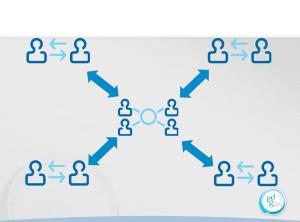by Rich Mesch
Earlier this year, I had the pleasure of delivering a session on Virtual Worlds at the eLearning Guild’s Online Forums with Susan Hendrich of AstraZeneca. The title of the session was “10,000 Reasons Virtual Worlds Won’t Work for Your Organization…And 10 Good Reasons They Will.” I titled the presentation that way because the more I talked to organizations, the more I heard, “Yeah, we looked at Virtual Worlds, and we realized it wouldn’t work for us.” Now, that’s not too surprising—in a recent post, I talked about Gartner’s Hype Cycle, and how Virtual Worlds were in the Trough of Disillusionment. And the reality is, like any new approach and new technology, there are significant barriers to success. So my thought was, let’s be upfront and honest; let’s talk about all the good reasons why organizations feel they can’t implement Virtual Worlds, and then let’s talk about some things you can do to help drive success.
I wanted to talk a little bit more on the blog about what those 10 good reasons were. So let’s start in the middle, with #5.
Reason #5: Virtual Worlds encourage human interaction, instead of replacing it.
Once upon at time we primarily used classes to teach. Experts had information, and they gave it to others. The model looked like this:

That worked for about ten thousand years. About thirty years ago, we started using computers. Except, instead of creating something new, we just allowed the computers to replace the expert. The model looked like this:

Pretty familiar, right? Information was still one-way.
Just a few years ago, the concept of Web 2.0 came along. The biggest difference with Web 2.0 was that technology was now encouraging participation. The truth is, everybody in an organization has valuable information. And that information needs to flow between everybody, not just from experts outward. And the technology needs to support that and provide the conduit for the communication, not replace it. Whether it’s social networks, mobile applications, or immersive learning, technology needs to keep information flowing from people to people. The model looks more like this:

One of the great things about virtual worlds is they can create the same kind of one-to-one or group-to-group interaction that works so well in real life; the benefit, of course, is that virtual teams that can’t necessarily be in the same room can communicate more effectively. Sure, they could jump on a conference call or a WebEx, but that would eliminate the a lot of the visual and emotional cues that create effective communication… and we’ll talk about that more in my next post!
Earlier this year, I had the pleasure of delivering a session on Virtual Worlds at the eLearning Guild’s Online Forums with Susan Hendrich of AstraZeneca. The title of the session was “10,000 Reasons Virtual Worlds Won’t Work for Your Organization…And 10 Good Reasons They Will.” I titled the presentation that way because the more I talked to organizations, the more I heard, “Yeah, we looked at Virtual Worlds, and we realized it wouldn’t work for us.” Now, that’s not too surprising—in a recent post, I talked about Gartner’s Hype Cycle, and how Virtual Worlds were in the Trough of Disillusionment. And the reality is, like any new approach and new technology, there are significant barriers to success. So my thought was, let’s be upfront and honest; let’s talk about all the good reasons why organizations feel they can’t implement Virtual Worlds, and then let’s talk about some things you can do to help drive success.
I wanted to talk a little bit more on the blog about what those 10 good reasons were. So let’s start in the middle, with #5.
Reason #5: Virtual Worlds encourage human interaction, instead of replacing it.
Once upon at time we primarily used classes to teach. Experts had information, and they gave it to others. The model looked like this:

That worked for about ten thousand years. About thirty years ago, we started using computers. Except, instead of creating something new, we just allowed the computers to replace the expert. The model looked like this:

Pretty familiar, right? Information was still one-way.
Just a few years ago, the concept of Web 2.0 came along. The biggest difference with Web 2.0 was that technology was now encouraging participation. The truth is, everybody in an organization has valuable information. And that information needs to flow between everybody, not just from experts outward. And the technology needs to support that and provide the conduit for the communication, not replace it. Whether it’s social networks, mobile applications, or immersive learning, technology needs to keep information flowing from people to people. The model looks more like this:

One of the great things about virtual worlds is they can create the same kind of one-to-one or group-to-group interaction that works so well in real life; the benefit, of course, is that virtual teams that can’t necessarily be in the same room can communicate more effectively. Sure, they could jump on a conference call or a WebEx, but that would eliminate the a lot of the visual and emotional cues that create effective communication… and we’ll talk about that more in my next post!


